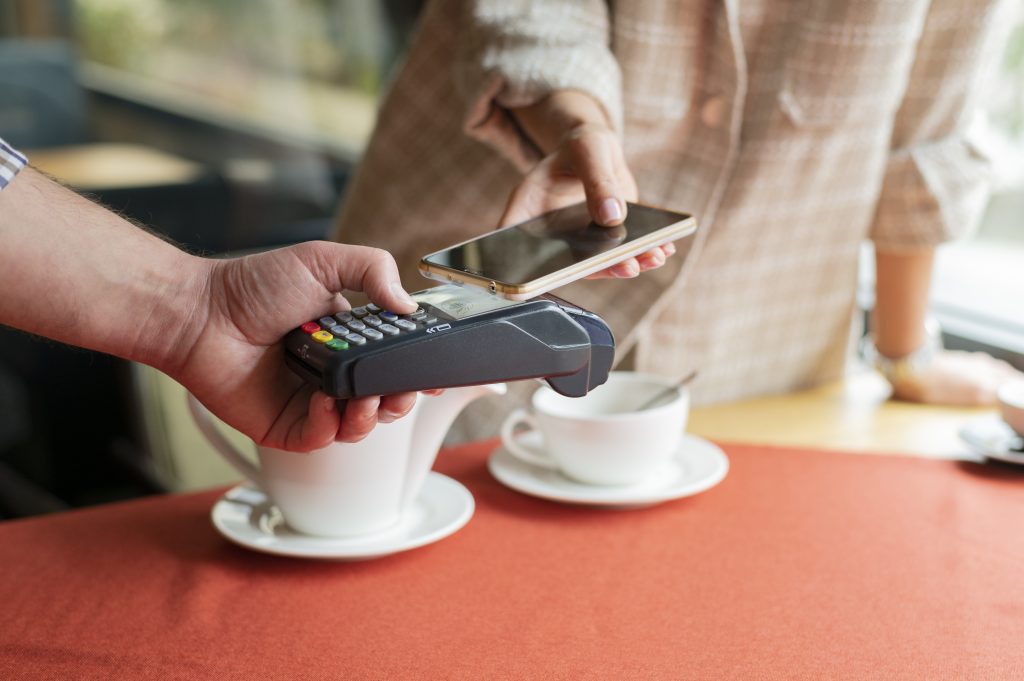More people are using debit cards, bank transfers, and cryptocurrency to pay for goods than ever before. In 2021 alone, there were $989 billion of non-cash transactions, while future estimates predict that $2 trillion of cashless payments will take place every year by 2026.
However, the future of cashless payments is still a little murky. A future without cash would impact individuals without bank accounts and many consumers are concerned about the ethics of shared e-commerce data.
That said, the benefits of cashless payments still vastly outweigh the drawbacks. Consumers who embrace cashless payments can manage their money and businesses can use social commerce to bolster their revenue and reduce their operational costs.
Cashless Payments Trends
Cash is still king, but non-cash payments like contactless cards and peer-to-peer payments (P2P) are steadily gaining popularity. This trend is likely driven by young consumers, who feel more comfortable navigating a cashless world. A recent Pew Research Center survey even found that only 45% of Americans aged 18 – 45 “try to have cash on hand”, compared to 71% of those aged 50+.
Pew Research Center surveys also found that less affluent Americans are far more likely to be reliant on cash than their wealthier peers. 30% of households with an income below $30,000 say they use cash for “all or almost all” purchases, while only 6% of households with income about $50,000 use cash today.
A widespread increase in digital and social commerce will drive the future of non-cash payments, too. Social commerce is a subsector of e-commerce that has been on the rise in recent years due to the increased popularity of social media channels like TikTok and Instagram. Online consumer-to-business (C2B) transactions can help consumers use their connected bank account and innately enhance the consumer journey.
The Benefits of Cashless Payments
Going cashless is good news for those of us who struggle with mental arithmetic. Financial tech (fintech) like contactless card payments is extremely convenient, too. Removing the need to visit the bank for cash withdrawals frees up time and may encourage greater consumer spending.
Small to medium businesses (SMBs) can also reap the rewards of cashless payments. The benefits of going cashless as an SMB include:
- Increased Revenue: Cashless transactions will dominate the payment industry in the future. SMBs that embrace cashless can enjoy increased customer retention which, in turn, bolsters revenue.
- Speed: Consumers don’t want to wait in line to make their purchases. Queue times can be slashed by installing cashless devices that complete the transaction process in moments rather than minutes.
- Lower Operating Costs: Storing and transporting cash is costly. Cashless SMBs can save the money they would spend on armored couriers and reinvest profits to support growth.
- Account Accuracy: Non-cash payments remove the risk of human error. SMBs that utilize cashless payment can usually find accounting software that integrates with their payment portals, too.
Going cashless is great for businesses. Quicker transactions improve the customer experience and may translate into increased sales volumes.
Carrying around less cash can improve security, too. Coins and notes can be lost, stolen, or counterfeited. Cashless payment systems, however, are usually encrypted and can be easily tracked to improve security.
Challenges and Solutions
Businesses and financial institutions are gearing up for a cashless future. However, before we turn our back on nickels and dimes, it’s worth considering the drawbacks of a cashless society.
Going cashless puts vulnerable people at risk. That’s why cities some cities and states have introduced legislation to prohibit cashless businesses. The argument behind proposals like these is that folks who do not have access to a bank account are still able to buy goods and procure services just like everyone else. This is particularly important for folks with lower incomes, who may struggle to keep up with credit card payments and feel disenfranchised by the move towards a cashless future.
Going cashless may exacerbate some financial cybersecurity concerns, too. In an entirely cashless enterprise, malicious actors may be able to gain access to private data and expose personal financial information This is a real concern for people who bank online, as “open finance” features give authorized users a 360-degree view of their banking details. If a person’s banking details are stolen, their entire life savings may be at risk.
Fortunately, the future of cashless payments is evolving in response to these challenges. Today, many financial institutions have embraced a “zero trust” approach to their cybersecurity ecosystem. This minimizes the risk of malicious actors gaining access to accounts and firms up data protection efforts.
Conclusion
Cashless payments are on the rise. Going cashless is convenient, secure, and time-efficient for businesses and consumers alike. However, companies and government agencies need to respond to the rise of social commerce and contactless transactions. Advancements in cybersecurity are needed to keep personal data safe, and more pro-cash legislation may be necessary to ensure everyone can still pay for basic goods and services.
